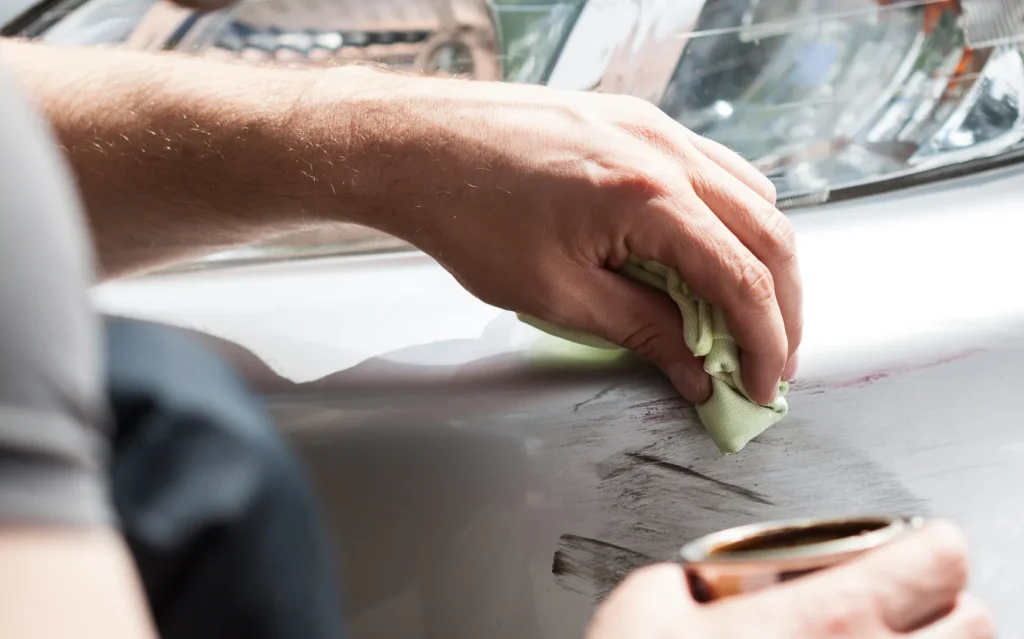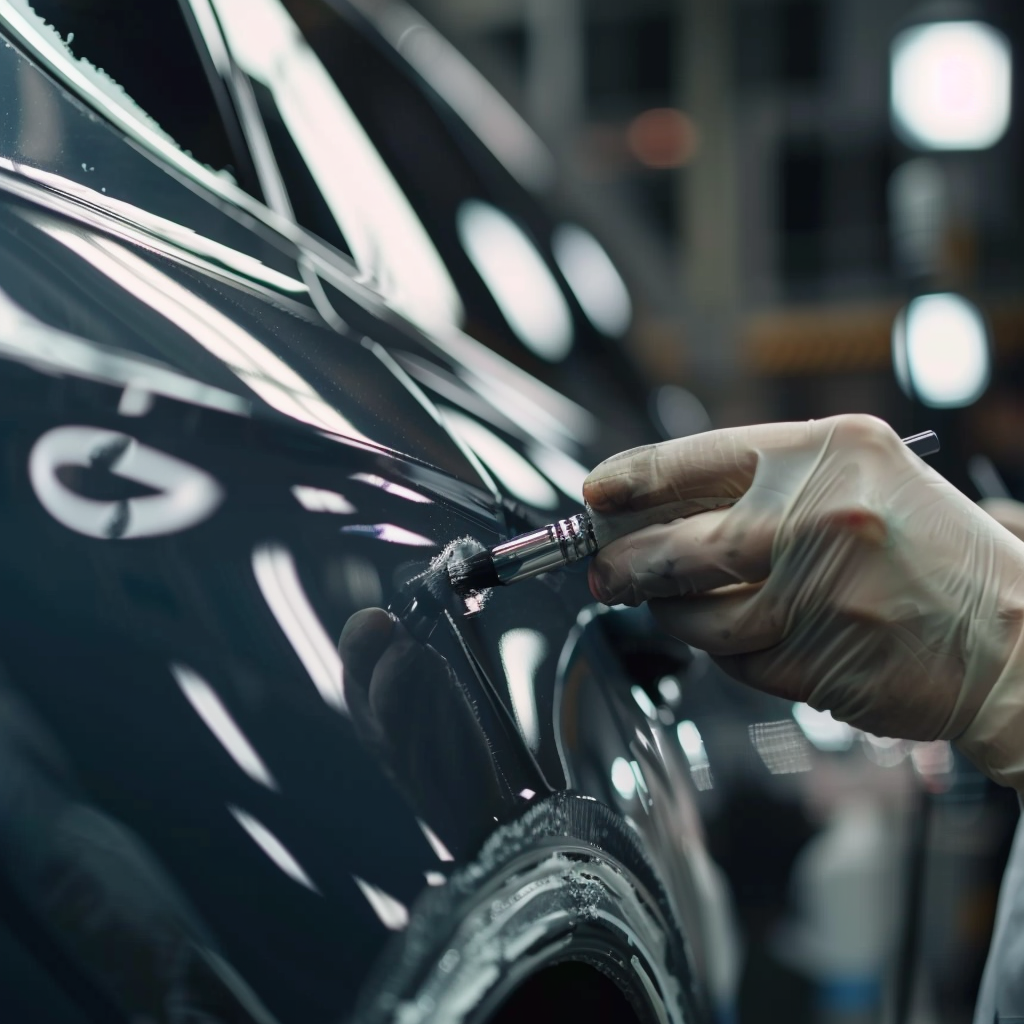
Car scratches are a frustrating reality for vehicle owners, and whether they’re caused by stray shopping trolleys, careless parking, or road debris, they can affect both the appearance and value of your car. In this article, we’ll delve into the world of DIY car scratch repair, giving you all the details you need before getting started, including tools, techniques, and the nuances of paint types. While DIY repairs can be satisfying and cost-effective, I’ll also explain why working with professionals like Axioma.co.uk might sometimes be your best option.
Why You Need to Repair a Car Scratch
Scratches aren’t just about aesthetics. Left untreated, even a minor scratch can expose your car’s paint to moisture, leading to rust over time. Surface scratches may seem insignificant, but deeper ones, especially those that cut through the clear coat and into the base coat or primer, can accelerate the deterioration of your car’s bodywork. This can lead to larger, more expensive repairs down the line. Beyond preservation, fixing scratches can maintain your car’s resale value and keep it looking new.
Methods of DIY Car Scratch Repair
There are several approaches to repairing car scratches, depending on the depth and severity of the damage.
Here are the main types:
1. Surface Scratches (Clear Coat Scratches)
These scratches only affect the top clear coat of the car and are the easiest to repair. If you run your fingernail over the scratch and don’t feel it catching, it’s likely a clear coat scratch. Here’s how to handle them:
•Tools & Products: For surface scratches, a simple scratch removal product will often suffice. Products like Meguiar’s ScratchX or T-Cut are effective for polishing out minor imperfections.
•Process: Clean the area thoroughly with car shampoo, apply the scratch remover to a microfiber cloth, and buff the scratch in a circular motion. Work patiently, as over-buffing can damage the clear coat.
2. Base Coat Scratches
If the scratch has gone beyond the clear coat into the base coat, it’s more complex. These scratches are more visible and require careful attention.
•Tools & Products: You’ll need touch-up paint matched to your car’s specific colour code, fine sandpaper (1500 grit), and a clear coat.
•Process: Clean the scratched area, then lightly sand the scratch to smooth the surface. Apply the touch-up paint using a fine brush, being careful not to over-apply. Once dry, apply a clear coat to seal it, followed by a polish to blend the repair with the surrounding paint.
3. Deep Scratches (Primer/Metal Exposure)
When a scratch exposes the car’s primer or even metal, the repair becomes more urgent. If untreated, it could lead to corrosion or rust.
•Tools & Products: In addition to touch-up paint and clear coat, you’ll need primer, 1500-2000 grit sandpaper, and potentially a body filler if the scratch is very deep.
•Process: Start by cleaning and sanding the area, then apply primer to fill the scratch. After it dries, sand it lightly and apply the base coat, followed by a clear coat. This type of repair is best for someone with some experience, as it requires precision to blend the paint properly.
Recommended Products and Tools for DIY Car Scratch Repairs
Here are some highly recommended products to ensure successful DIY scratch repair:
•Meguiar’s Ultimate Compound: Great for removing clear coat scratches and restoring gloss.
•Turtle Wax Scratch Repair & Renew: A quick-fix solution for minor surface scratches.
•3M Scratch Removal System: Includes sanding pads, scratch remover liquid, and finishing discs for a complete DIY solution.
•Touch-Up Pens: Many car manufacturers offer touch-up pens that match your vehicle’s exact color. Brands like Dupli-Color are highly recommended for this.
•Microfiber Cloths: Essential for polishing and applying products without scratching the paint further.
•Car Shampoo: Ensure the surface is clean before any repair with a quality shampoo like Autoglym Bodywork Shampoo Conditioner.
How to Deal With Deep Car Scratches vs Surface Car Scratches
Surface scratches are typically cosmetic and can often be polished out using a quality scratch remover or compound. Deep scratches, on the other hand, require more care and precision. These go beyond the clear coat and can expose the base coat or primer.
For deep scratches:
•Clean Thoroughly: Start by cleaning the scratch and surrounding area. Dirt can affect the repair and may scratch the paint further.
•Sand Carefully: Use 1500-2000 grit sandpaper to smooth the area around the scratch. Be sure not to sand beyond the damaged area.
•Apply Primer & Touch-Up Paint: If you reach the primer or metal, apply a thin layer of primer before using touch-up paint.
•Polish & Wax: Once the touch-up paint has dried, polish the area and apply a good quality wax to protect the finish.
Detailing: The Key to Keeping Your Car Shiny and Scuff free
Car detailing is the process of thoroughly cleaning, restoring, and protecting all parts of your car. After repairing scratches, detailing ensures the paint remains protected and your car keeps its shine. A proper detail includes:
•Washing: Use pH-balanced car shampoo to avoid stripping the wax or damaging the paint.
•Claying: Clay bars help remove embedded contaminants that washing alone can’t clean.
•Polishing: This step removes any oxidation or minor scratches and restores the paint’s clarity.
•Waxing/Sealing: Apply a protective wax or sealant to keep the paint protected from UV rays, contaminants, and weather.
For the best results, detailing should be done every few months. Investing in a ceramic coating can also provide long-term protection, with benefits lasting for up to two years.
Paint Differences Between Asian and European Cars
One interesting aspect of car detailing and paint repair is the difference in paint types used by manufacturers. Generally, Asian cars tend to have softer, more pliable paint. This means that scratches and swirl marks are more likely but also easier to correct with polishing.
European cars, on the other hand, typically use harder paint. While they resist scratches better, when they do get damaged, repairs can be more challenging and require more aggressive polishing or compounding to correct.
Understanding your car’s paint type will help you determine the right products and techniques for scratch repair and maintenance.
A Final Word: Consider the Experts at Axioma.co.uk
While DIY scratch repairs can be rewarding and save you money, there’s always the risk of making a mistake that worsens the damage. Usually DIY repairs get the job done like 60-70%, you won’t get the initial shine or perfect color.
If you’re unsure or dealing with a deep scratch, it’s often best to leave the job to professionals like the team at Axioma.co.uk. We’ve repaired over 100000 cars so far, we have a wealth of experience in fixing cars, we restore your vehicle to its former glory and shine. Whether it’s a bumper scuff or a deep scratch, we’ve got the tools, expertise, and passion to get the job done right.

 Share Post
Share Post


